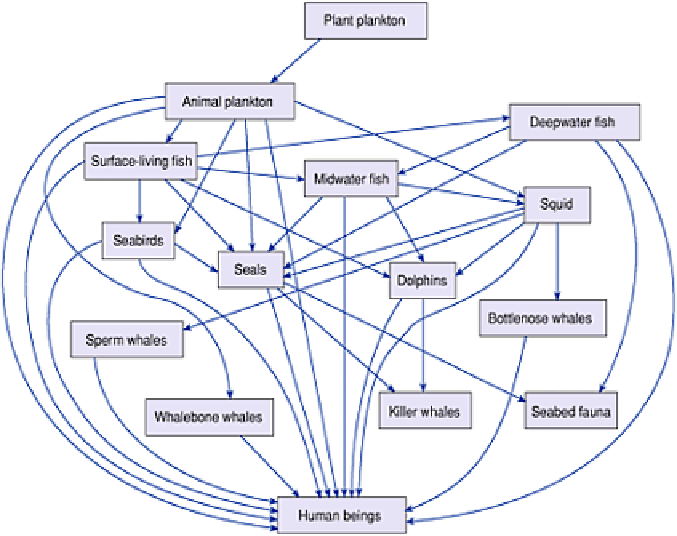Environmental Engineering Reference
In-Depth Information
thick patches of vegetation are found beneath bird cliffs, around animal burrows, in
musk-ox meadows and even around rotting skeletons.
ENERGY AND ECOLOGICAL PRODUCTIVITY
The first ecologists who visited polar regions invariably commented on the simplicity,
fragility and low productivity of both the terrestrial and the marine ecosystems. In general
there are fewer species, fewer ecosystem linkages, and much less primary and secondary
production than in temperate and tropical latitudes. A diagrammatic representation of the
food web of the polar ocean is given in Figure 24.5. Recent work has highlighted some
specialized and sophisticated features of the ecosystems. For example, Arctic food chains
supporting the top predators can be very long, with polar bears, for example, occupying a
clearly defined fifth trophic (feeding) level. Charles Elton, in his early expeditions to
Svalbard in the 1920s, also recorded how integrated were the terrestrial and
Figure 24.5
The food web of polar oceans.
marine ecosystems, and how readily energy and materials are able to move from one to
the other, via birds and sea mammals.
The environmental factors which favour ecological productivity become less
favourable as one moves polewards. Solar radiation, moisture, air and soil temperatures
and plant nutrients become limiting in high latitudes. Many ecologists rank shortages of

